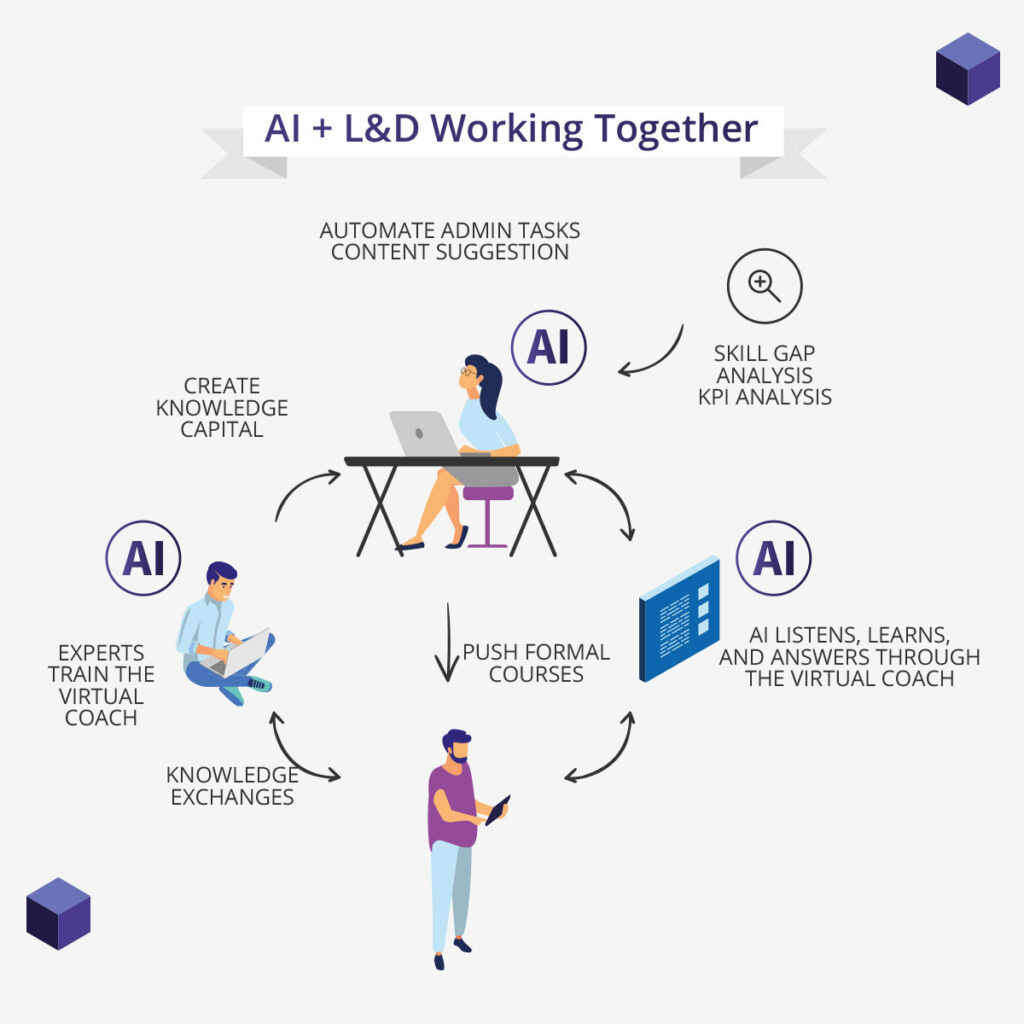When we talk about the future of eLearning, we cannot help but think of online training that is more flexible and adaptable to specific needs.
Machine Learning, therefore, aims to obtain more personalized training.

WHAT IS MACHINE LEARNING?
Let’s start from the concept of AI (Artificial Intelligence).
We’ve all heard about it and everything seems to be integrated
with Artificial Intelligence.
We can see it for example on social networks, such as Facebook, where we perceive an entity that understands what we post while also recognizing the empathy behind our texts, which gives us suggestions, which analyzes our images and assigns tags so as to build meaning. The same happens with Alexa, or Siri, which through AI is able to predict our routine, our habits, analyzing them and advising us on activities, routes or information that may be of interest to us in some way.
Only a few years ago, we could only imagine all this and see it in films, while today AI exists and is widely used.

Machine Learning is a concept underlying AI.
The difference is that Machine Learning refers to only one function of AI. In particular, ML serves to collect, identify and organize data, in other words “learning”, for example by being able to distinguish whether a car or a van is present in a photo, discriminating variables such as the overall size, the width of the wheels, the number of doors and windows.

The way ML works is to provide it with material to analyze, which in our case could be two thousand images of cars and vans. All the information collected is grouped into graphs until a pattern is identified, i.e. similarities between the images of one category compared to the images of the other. The aim is therefore to reduce the difference between the estimated data and the real data, so as to understand in detail which image corresponds to a car and which to a van.
Clearly not everything happens immediately, but we are talking about a process. The first step is to collect all the data, probably in an Excel table or in a Database, so as to build a model, until the last step which is the application of this “discriminating” model to the new material.

In the field of Online Training, one of the main objectives is to increase learner involvement and make training more effective.
ML in our field has the objective of increasing engagement on the one hand and predicting user performance on the other.
So, what do we track with the help of ML in the field of training?
We try to improve the entire learning experience starting from not just setting ourselves the goal of making the learner acquire new knowledge, because all the knowledge is already available online. Today it is enough to search on the most common search engines and access in a few moments much more information than we really need.
Instead, we would like students to acquire the skills necessary to acquire the knowledge they need.
Today we can – in an LMS – track or suggest courses using ML.

If we have a learner in our LMS who is currently enrolled in a mathematics course perhaps not achieving excellent scores, and in the meantime is taking a cooking course with excellent results; we can – through ML – suggest taking a mathematics course related to recipes or in any case that integrates boring mathematics with fun culinary activities.
The ML will then understand that the student in question really likes cooking and that he needs to learn more mathematical notions, therefore suggesting a personalized path.
And this is only the beginning. We have other applications where ML plays a critical role, such as generating personalized learning paths, which allow students to delve deeper into the topics they need to learn. Then there are performance indicators, intelligent reports that will tell teachers how well users are doing and whether or not they are following a pre-established learning plan.
The most well-known eLearning platforms are developing these features, as in ILIAS LMS, and the first versions will be available in a few months.
